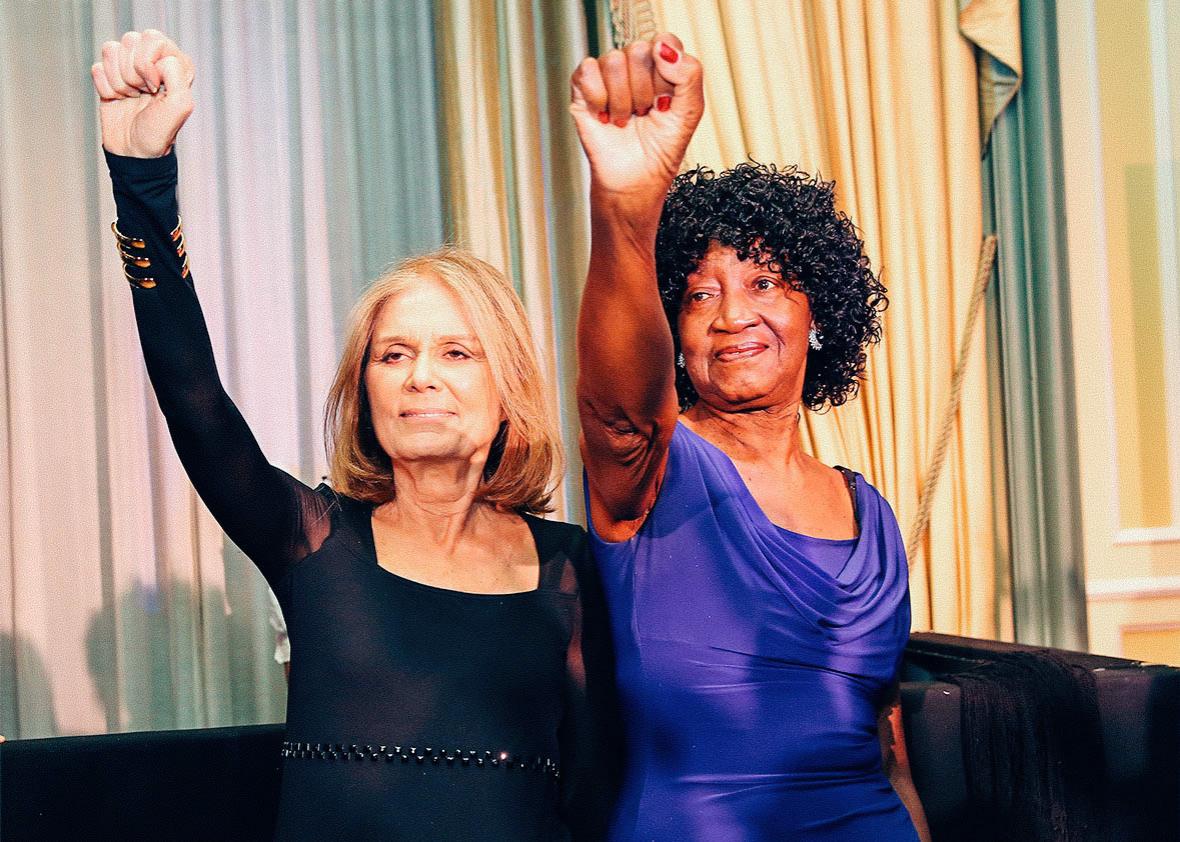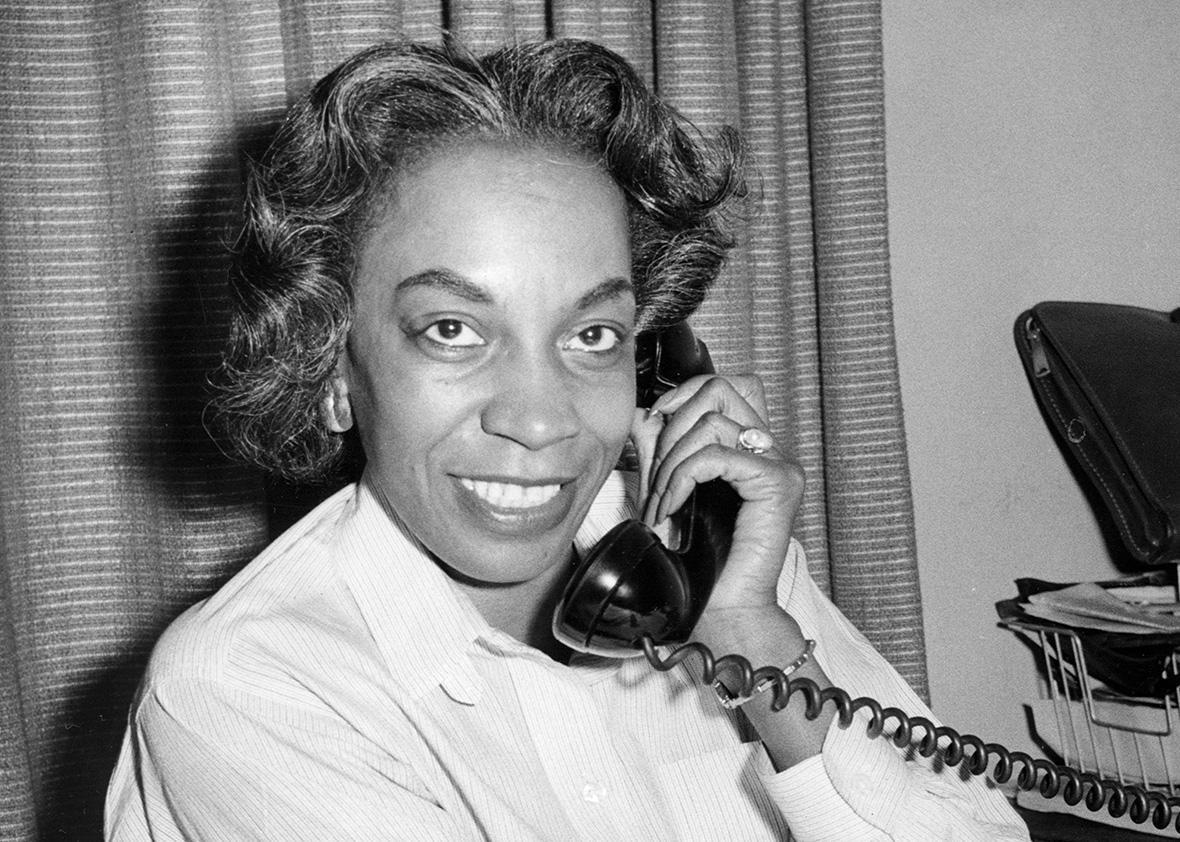Twenty years ago, if you asked young women what was wrong with feminism, you wouldn’t have had to specify which wave you were talking about—although Rebecca Walker proposed the term “third-wave feminism” in the early 1990s, it only came into widespread use in the 2000s. Second-wave feminism was feminism in the average American’s eyes a generation ago, and its problem was that it was too radical, too intent on capsizing everything mainstream America and common sense held dear. Feminism was for crop-haired, man-hating separatists who believed all heterosexual intercourse was rape or else it was for ball-busting career women who regarded marriage and childbearing as forms of patriarchal oppression that needed to be overthrown.
In 2010, Susan Faludi wrote for Harper’s about how generations of feminists were fighting amongst themselves, as feminists have a dispiriting tendency to do. At that time, the line as Faludi saw it was drawn between puritanical “old bags” from the 1970s, who drove off younger women by preaching about the distant glory days of their grassroots activism, and bloggers who wanted to celebrate how “wearing a Wonderbra is a statement of empowerment.” These characterizations of the dispute contained some truth and a lot of stereotyping on both sides, but the fracas was always cast as a mother-daughter clash. In a 2008 interview for the Daily Mail, Walker called her own mother, the second-wave novelist and poet Alice Walker, “a rabid feminist” and “revolutionary” whose indoctrination nearly convinced Walker to forgo the joys of motherhood herself. (Walker complained that the Daily Mail transformed the interview into a “tabloid piece” but later told NPR that “95 percent” of it matched what she said.)
Today, the case against second-wave feminists has done a 180, and they’re condemned as insufficiently intersectional compared with their present-day counterparts. Suddenly, ’70s feminism isn’t radical enough. In a smart, considered piece for Catapult about popular feminism’s blind spot with regard to class, the writer Kashana Cauley acknowledges second-wave feminism’s “success in passing Title IX, providing women access to a broader variety of jobs, liberalizing divorce laws, and establishing women’s studies programs in universities,” but describes it as “focused predominantly on middle-to-upper class white housewives who wanted to do more fulfilling work than cooking and cleaning.” This made me bite my lip because Cauley is a writer I admire and because I agree wholeheartedly with her larger point that feminism should pay more attention to economic inequality and reproductive rights and less to glitzy symbolism. I just don’t agree that second-wave feminism’s track record is so meagre.
I was too young to participate in the second wave’s activism, but I’m old enough to remember what life was like before it came along, when you opened the newspaper to classified sections segregated into “Help Wanted—Female” and “Help Wanted—Male.” Second-wave feminism had plenty of flaws, without a doubt, but it was an impressively diverse movement. The assertion, too often made casually, that its leaders and participants were entirely white isn’t just incorrect; it also serves to erase such courageous and inspiring feminists as Flo Kennedy, Aileen Hernandez, Doris Wright, Michele Wallace, Margaret Sloan-Hunter, Shirley Chisholm, Cherríe Moraga, Gloria E. Anzaldúa, Barbara Smith and the other members of the Combahee River Collective, and too many more to name here. The feminism of the 1960s and ’70s belonged as much to them as to anyone else.
It’s true that white women were second-wave feminism’s most visible spokeswomen, and some of those women—particularly Betty Friedan—strove to keep the movement’s image as mainstream and middle-class as possible; Friedan’s aversion to showing any association with lesbians was a notorious flashpoint. In her famous 1984 denunciation of Freidan’s The Feminine Mystique, Bell Hooks wrote:
She did not discuss who would be called in to take care of the children and maintain the home if more women like herself were freed from their house labor and given equal access with white men to the professions. She did not speak of the needs of women without men, without children, without homes. She ignored the existence of all non-white women and poor white women.
All true, but Friedan did not and does not define the feminist thinking and activism of her time. Somehow, in the intervening years, Friedan’s approach has been conflated with all of second-wave feminism, which is fantastically inaccurate.
In a pre-cable, pre-internet era of only three national TV networks, when large media conglomerates had a stranglehold on mass communication, feminists didn’t have many avenues for controlling the way their message was framed. The press loved pretty white Gloria Steinem, but she fought tenaciously to diversify the movement’s face long before intersectionality became a feminist mantra. During the 1970s, Steinem insisted that any speaking engagement she agreed to also included Kennedy (lawyer, activist, and founder of both the Feminist Party and the Women’s Political Caucus), Sloan-Hunter (civil rights organizer, educator, and first chairwoman of the National Black Feminist Organization), or Dorothy Pitman Hughes (co-founder of Ms. magazine, child-welfare advocate, and founder of the first domestic violence shelter in New York City). And there was a lot more to feminism than just Steinem and her circle. We all know how to critique the way today’s media covers women’s concerns, from rape culture to body image, but when it comes to the far less extensive and diverse media of the past, suddenly we believe everything dished out to us and assume that we’re being shown all there was to see.

Monica Schipper/Getty Images for Ms. Foundation for Women
A great corrective for this myopia is the fascinating anthology Dear Sisters: Dispatches From the Women’s Liberation Movement, edited by Rosalyn Baxandall and Linda Gordon, a collection of broadsides, cartoons, manifestos, and other documents written, mimeographed, and published in the thick of things. The contents range from hot denunciations of sexism in various leftist political movements to foundational papers on feminist approaches to work, education, economics, politics, health, family, sexuality, reproductive rights, and gendered violence. It’s an eye-opener. The women who wrote these documents considered themselves revolutionaries and were far more likely to call for “the disarming of and community control of the police” and “free, humane competent medical care” than to urge other women to lean in. Feminism in the ’60s and ’70s was a lot more than just the National Organization for Women.
Second-wave feminism was very far from perfect, and many radicals from other parts of the ’70s left leveled legitimate criticism at its failings. But much of what the second wave accomplished or helped to accomplish now seems as if it has always existed. It hasn’t. Much of it was the work of scrappy, selfless rebels whose names we’ve forgotten, women determined to create feminist alternatives inside a monolithically misogynistic society and in the face of fairly constant ridicule and hostility. Among the things that we all owe to the second wave are:
- Every domestic violence shelter
- Every rape crisis center and hotline
- Every women’s health clinic
- Every legal abortion
- Every contraceptive prescription a doctor writes for a single woman
- Every credit card or bank loan a woman gets without a male relative co-signing
- Every shred of sexual harassment legislation or regulation
Most of these things would not exist at all if not for the feminists of the 1970s, and they don’t benefit middle-class women alone. Some have offered lifelines to women from many backgrounds when they needed it most. That second-wave feminism accomplished all this, despite its shortcomings and divisions, ought to be seen as an encouraging sign. We’re not perfect, either, and there’s still a lot left to do.
